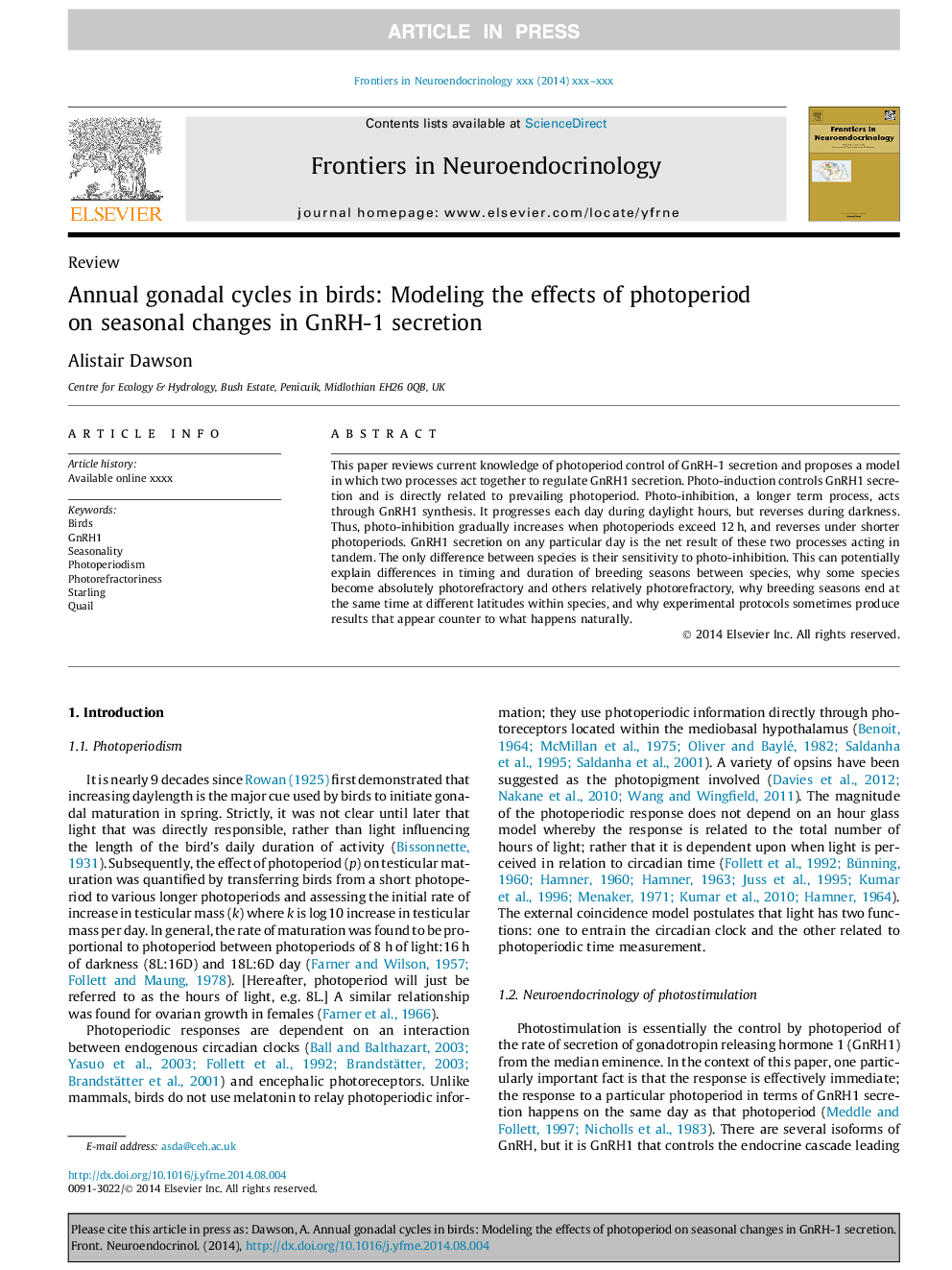| Article ID | Journal | Published Year | Pages | File Type |
|---|---|---|---|---|
| 5900644 | Frontiers in Neuroendocrinology | 2015 | 13 Pages |
Abstract
This paper reviews current knowledge of photoperiod control of GnRH-1 secretion and proposes a model in which two processes act together to regulate GnRH1 secretion. Photo-induction controls GnRH1 secretion and is directly related to prevailing photoperiod. Photo-inhibition, a longer term process, acts through GnRH1 synthesis. It progresses each day during daylight hours, but reverses during darkness. Thus, photo-inhibition gradually increases when photoperiods exceed 12Â h, and reverses under shorter photoperiods. GnRH1 secretion on any particular day is the net result of these two processes acting in tandem. The only difference between species is their sensitivity to photo-inhibition. This can potentially explain differences in timing and duration of breeding seasons between species, why some species become absolutely photorefractory and others relatively photorefractory, why breeding seasons end at the same time at different latitudes within species, and why experimental protocols sometimes produce results that appear counter to what happens naturally.
Related Topics
Life Sciences
Biochemistry, Genetics and Molecular Biology
Endocrinology
Authors
Alistair Dawson,
